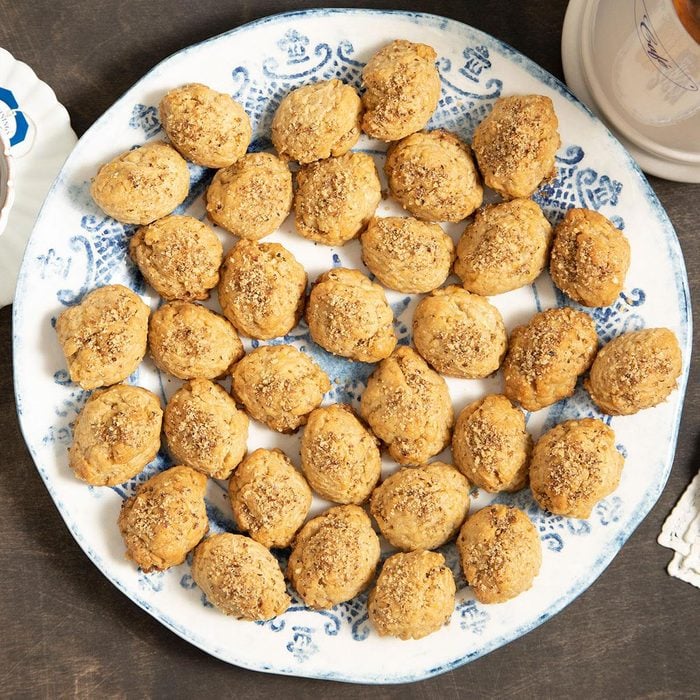Various cultures around the world have their own traditional holiday cookie: cutout and glaze-painted sugar and gingerbread cookies in the United States, speculaas (Dutch windmill cookies) in the Netherlands, or zimtsterne (cinnamon stars) in Germany and Switzerland, to name just a few. In Greece, Cyprus and nearby areas, melomakarona (honey cookies) are found everywhere during the Christmas season.
Unlike most cookies that call for butter, melomakarona use olive oil to create a dough that can be mixed and gently kneaded by hand. The baked Greek Christmas cookies are then dipped in a honey syrup that moistens the crumbly cookie texture as the syrup soaks in. It’s one of our favorite traditional Greek recipes.
What are melomakarona?
These cookies get their name from meli, meaning honey, and makaria, meaning blessed. In Greece, these cookies have long been a popular sweet treat enjoyed during the Twelve Days of Christmas. Although many variations exist, the traditional recipes lack eggs and butter so that they can be enjoyed by fasting Orthodox Christians.
The cookies have a hint of sweetness in the dough, but it’s the honey coating that makes them stand out on a holiday tray. In this recipe, fresh-from-the-oven cookies are dipped into a cooled honey syrup (some variations use the opposite approach and soak room-temperature cookies in a hot syrup). This hot-and-cold combination results in the syrup soaking in without making the cookies mushy. Either approach works, but the cooled syrup route may be easiest (and safest) if you’re baking with kids.
Melomakarona Ingredients
- Honey: The particular honey you use can add hints of flavor to this recipe. Greek honey often contains notes of pine, as well as thyme, oregano, lavender and orange.
- Confectioners’ sugar: In these Greek honey cookies, confectioners’ sugar is in the delicious dough. You can sift it first to make sure there aren’t any lumps.
- Olive oil: We don’t often use olive oil when baking, but these cookies are an exception. Olive oil’s strong flavor is essential. If you find it overpowering, you could use a mild variety or replace half of the olive oil with vegetable oil. And if you love the flavor of olive oil, you might like to try olive oil cake after this recipe!
- Cognac: Cognac is a high-end type of brandy, so you can pour from your favorite bottle of brandy instead. For an alcohol-free cookie, replace the Cognac with orange juice.
- Orange juice and zest: Fresh juice and zest will add the most flavor to this recipe. Zest the orange first (follow the same rules for how to zest a lemon), then squeeze the fresh juice from it. You’ll probably need to zest one orange but squeeze two to get enough for this recipe.
- Flour: Use all-purpose flour for these cookies. You don’t need to sift it first since you’ll whisk it with other dry ingredients, including baking powder and cinnamon.
Directions
Step 1: Make the honey syrup
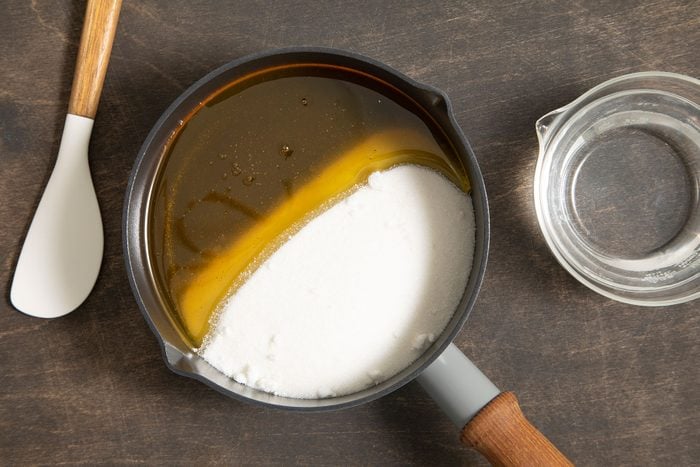
Preheat the oven to 350°F. In a small saucepan, bring the sugar, water and 3/4 cup honey to a boil. Reduce the heat, and simmer, uncovered, for 10 minutes. Remove the pan from the burner, and let the syrup cool completely.
Step 2: Mix the wet ingredients
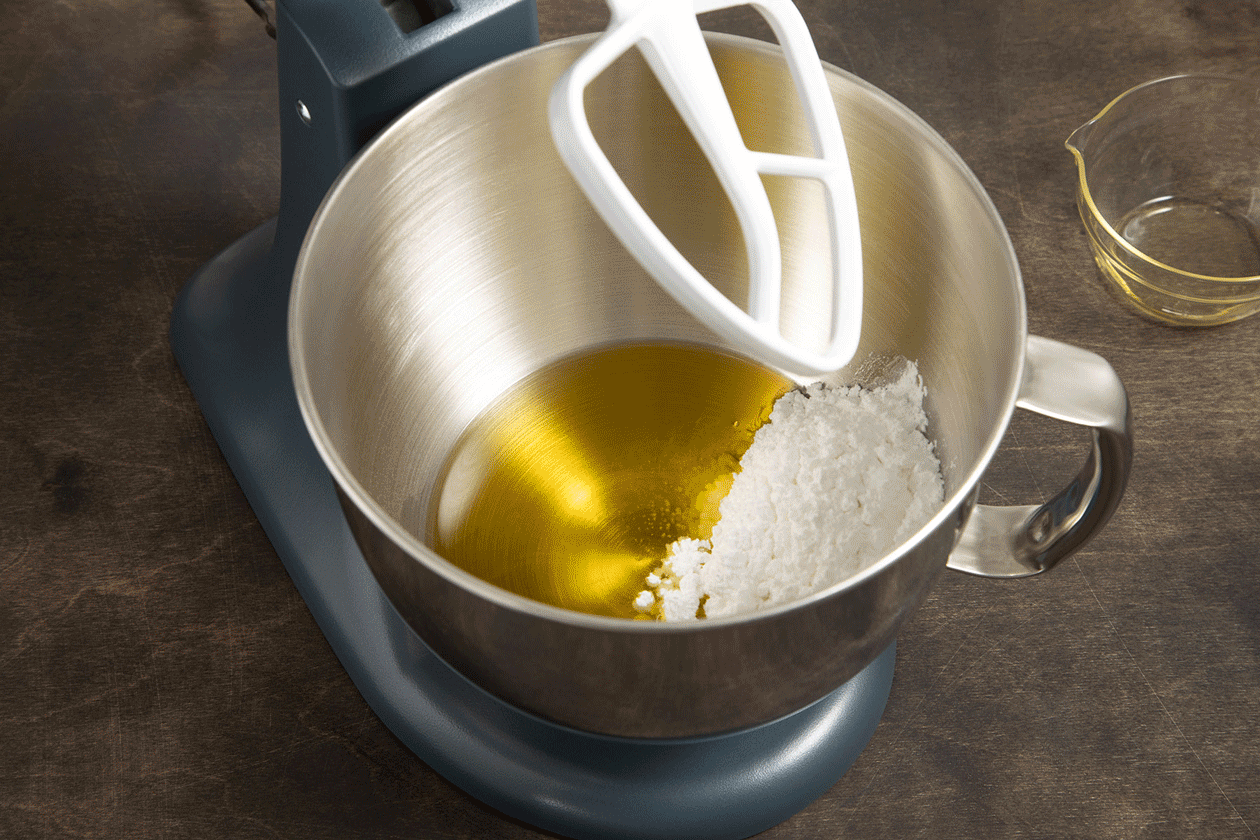
In a large bowl, beat the confectioners’ sugar and oil until blended. Beat in the Cognac, orange juice and the remaining 1 tablespoon honey.
Step 3: Mix the dry ingredients
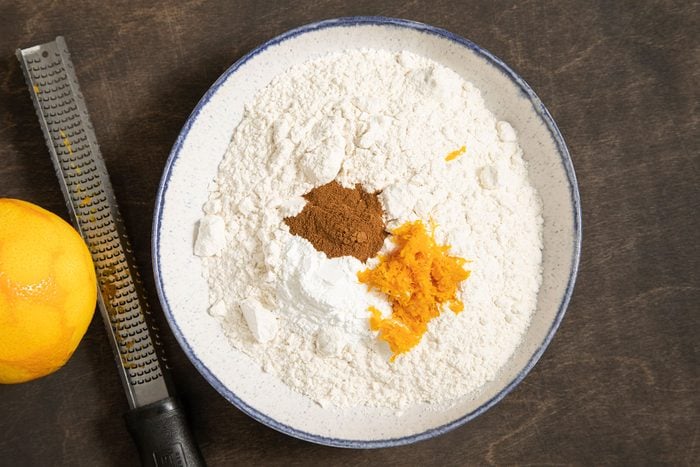
In another large bowl, whisk the flour, orange zest, baking powder and cinnamon.
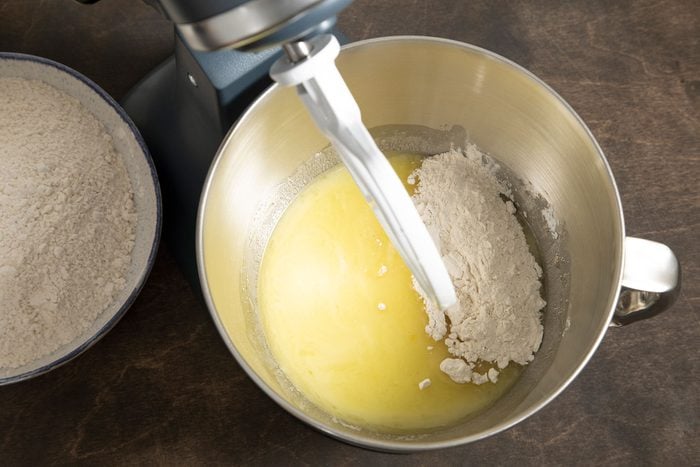
Gradually beat the dry ingredients into the wet ingredients.
Step 4: Shape the dough
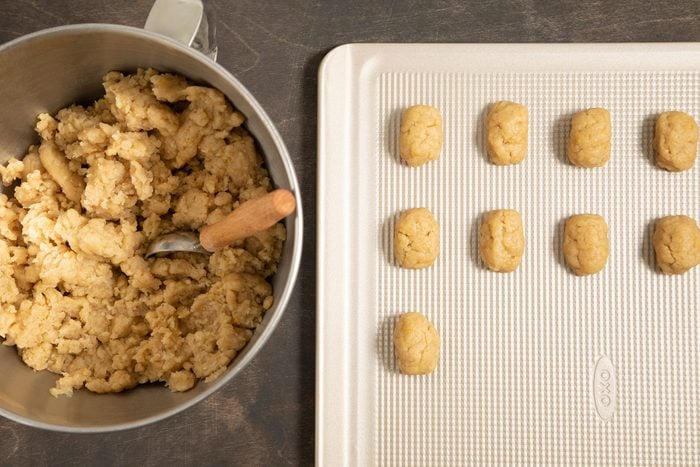
Scoop cookie dough by tablespoonfuls, and shape each into a 1-inch-thick oval. Arrange cookies 1 inch apart on two parchment-lined baking sheets.
Step 5: Bake the cookies
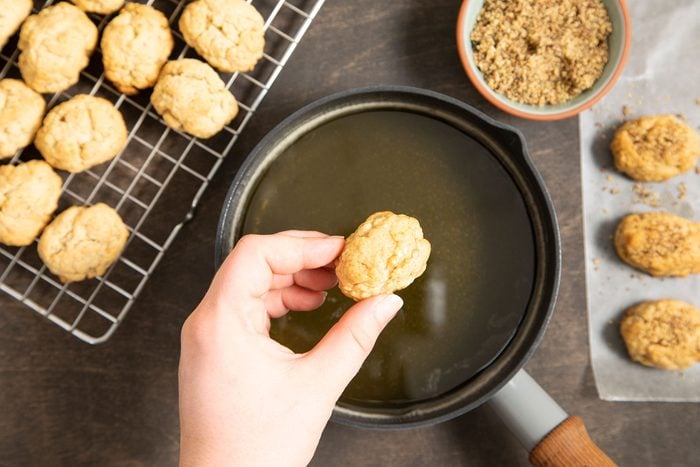
Bake the cookies, in batches as needed, for 20 to 25 minutes or until lightly browned. Let the cookies cool on the pans for five minutes. Transfer cookies to wire racks, and let stand until cool enough to handle but still warm.
Step 6: Coat the cookies
Using a slotted spoon, float and turn the still-warm cookies, a few at a time, in the honey syrup for about 10 seconds; let the excess drip off. Place the cookies on waxed paper, and sprinkle with walnuts. Repeat the coating and sprinkling with the remaining cookies.
Editor’s Tip: If the walnuts won’t stick to the cookies, use a small fork to drizzle them with a little more of the honey syrup before sprinkling on the nuts. Using a fork to indent a few lines on top of each cookie before baking may also help the honey and walnuts adhere to the surface.
Step 7: Cool and store
Let the cookies stand until the honey and walnuts set. Store them in layers between pieces of waxed paper in airtight containers.
Melomakarona Variations
- More citrus and spice: If you aren’t trying to let the honey’s delicate notes shine through, you can flavor the syrup to complement the cookies. When making the syrup, add 1 tablespoon orange juice, 1 teaspoon orange zest, one cinnamon stick and a couple of whole cloves. Up to 1 teaspoon ground cloves can go into the dough, too. Lemon juice and zest could replace the orange in the cookies and syrup.
- Chocolate-dipped cookies: After soaking the cookies in honey and letting them cool and drain completely, dip them in chocolate melted with a splash of olive oil. These already-sweet cookies can handle even dark baking chocolate. Add the walnut topping at the end while the chocolate is still warm.
- Other nuts: Walnuts grow well and are readily available in Greece, making them the traditional choice for Greek Christmas honey cookies. But other nuts can be used instead, such as toasted and crushed almonds, pecans or pistachios. For a nuttier flavor, work in up to 3/4 cup additional ground toasted nuts when you mix the dough (taking care not to overwork it). For a nut-free variation, replace the walnut topping with sesame seeds.
How to Store Melomakarona
Completely cooled cookies can be stored in an airtight container for up to two or three weeks. You may find they taste better the longer they sit. You could store them in the fridge, but this tends to harden the cookies.
Stacking honey cookies with layers of parchment paper keeps them from sticking together and makes them easy to store. For a prettier table presentation, leave out the paper, and stack them in ever-smaller layers to form a small pyramid—or to resemble the top of a Christmas tree. Alternatively, Greek Christmas cookies can be placed in small cupcake liners and arranged on a tray.
Can you make melomakarona ahead of time?
Since melomakarona keep so long and can develop a stronger flavor as they sit, you can bake and soak the cookies early in the holiday baking season. Making the cookies in stages is also possible, but you may need to adjust the technique a bit.
The easiest make-ahead step is the syrup. It can be made a day in advance and stored in the refrigerator until you’re ready to dip the warm cookies in it. The dough is best if mixed and baked in one session because the oil tends to separate if it sits too long.
You can bake the cookies ahead of time, store them for a couple of months in the fridge (or even longer in the freezer), and dip them into the syrup as needed when you’re ready for a sweet snack. But you’ll need to flip-flop the temperatures: Dip cool cookies in hot syrup. If you froze the unsoaked cookies, let them defrost completely and come to room temperature before you dip them in syrup simmering on very low heat.
Melomakarona Tips
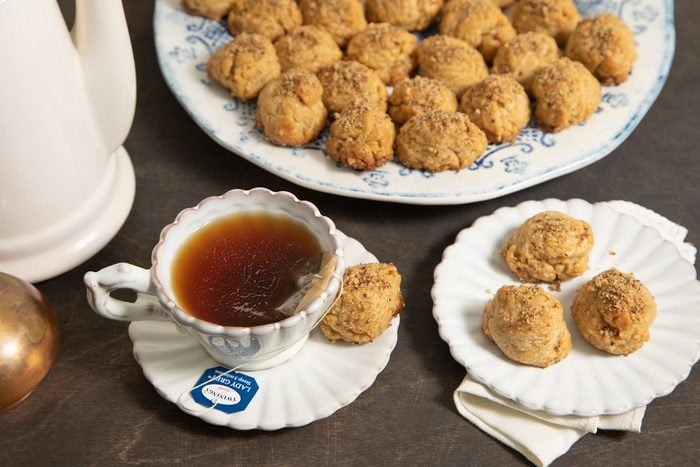
Are melomakarona vegan?
Because they are dipped in honey, melomakarona are not vegan. But the lack of eggs and butter makes this recipe easy to adapt for a vegan, honey-free diet. For the soaking liquid, replace the honey with maple syrup or agave nectar, or simply make a sugar-and-water syrup. The small amount of honey in the dough can be left out or replaced with maple syrup for flavor.
Honey’s antibacterial properties help to keep Greek Christmas honey cookies fresh for several weeks. Without it, vegan melomakarona are best eaten within one to two weeks.
What are other types of Greek cookies?
Finikia are similar to melomakarona, but they are typically deep-fried instead of baked. Kourabiedes resemble a shortbread cookie that can be tossed in powdered sugar. Koulourakia, a buttery cookie made from twists of dough, tend to be served at Easter. For an international cookie platter, consider baking some of these Christmas cookies from around the world.




















